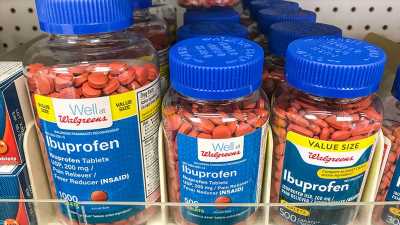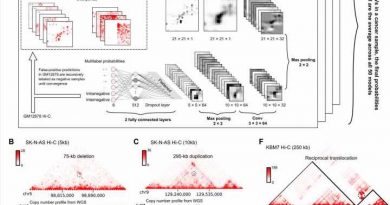NSAID Use in Diabetes May Worsen HF Hospitalization Risk
Among adults with diabetes but no history of heart failure (HF), taking a nonsteroidal anti-inflammatory agent (NSAID) — even for only a month —sharply raises the risk of an HF hospitalization, suggests a prospective, controlled study.
Certain subgroups may account for much of the excess risk, the results suggest, including the very elderly, patients with uncontrolled diabetes, those prescribed an NSAID for the first time, and patients already taking both a renin-angiotensin-system inhibitor (RASi) and a diuretic.
Such patients with a firm indication for NSAIDs potentially could “be the ones benefiting most from closer follow-up, reduced dosage, or other mitigation strategies,” Anders Holt, MD, told theheart.org | Medscape Cardiology.
Holt, of Copenhagen University Hospital and Herlev-Gentofte Hospital in Hellerup, Denmark, is lead author on the analysis of Danish registry data published April 10 in the Journal of the American College of Cardiology. He had presented essentially the same results in preliminary form at the European Society of Cardiology (ESC) Congress 2022.
Heart failure hospitalizations linked to NSAIDs, the published report notes, are often attributed to symptoms from temporary fluid overload, often without worsening cardiac function, that stem from the drugs’ renal effects.
“One could speculate,” Holt said, that such HF events might be less severe and even associated with better outcomes compared with other forms of heart failure.
But the current analysis provides a hint to the contrary, he observed. The 5-year mortality was similar for patients with HF linked to NSAIDs and those with other forms of HF, “which could suggest that NSAID-associated heart failure is more than transient fluid overload.”
The drugs may promote HF through direct effects on the heart by any of several proposed mechanisms, including “induction of arrhythmias and heart fibrosis, vasoconstriction, subclinical inflammation, and blood pressure elevation,” Holt said.
The current study doesn’t determine whether NSAID-associated HF stems from transient fluid overload or direct cardiac effects, but it’s “most likely both.”
In other limitations, the analysis is unable to “reliably explore” whether promotion of HF is an NSAID class effect, a “clinically relevant” point given the drugs’ varying effects on cardiovascular risk, states an accompanying editorial. Nor was it able to determine whether the drugs exert a dose-response effect on HF risk, note Hassan Khan, MD, PhD, Norton Healthcare, Louisville, Kentucky, and Setor K. Kunutsor, MD, PhD, University of Leicester, United Kingdom.
Still, “Given the well-established relationship between the use of NSAIDs and increased HF, these findings are not unexpected because type-2 diabetes is also a major risk factor for HF.”
But it may be “premature to issue guideline recommendations based on a single observational study,” the editorialists write. “Further robust clinical trial evidence is needed to replicate these results and investigate the relationship of the type and dose of NSAIDs with HF risk. However, it should be realized that short-term or long-term use of NSAIDs may be detrimental to cardiovascular health.”
The analysis covered 23,308 patients from throughout Denmark with a type-2 diabetes diagnosis and no HF history who experienced a first HF hospitalization; their age averaged 76 years and 39% were women.
They served as their own controls; their NSAID exposures at two 28-day periods preceding the HF event, the one immediately before and the other preceding it by 56 days, were compared as the index and control periods, respectively.
Exposure to NSAIDs was defined as obtaining a prescription for celecoxib, diclofenac, ibuprofen, or naproxen, “as these are NSAIDs used primarily in Denmark,” the report states.
Odds ratios (OR) for HF hospitalization associated with NSAID exposure within 28 days preceding the event were:
-
1.43 (95% CI, 1.27 – 1.63) overall
-
1.41 (1.16 – 1.71) for an NSAID given on top of both RASi and diuretics
-
1.68 (95% CI, 1.00 – 2.88) for patients with elevated hemaglobin A1c
-
1.78 (95% CI, 1.39 – 2.28) for those 80 or older
-
2.71 (95% CI 1.78 – 4.23) for those with prior NSAID use
That NSAID use and diabetes are each associated with increased risk for HF is well established, Holt observed. Yet the drugs had been prescribed to 16% of patients in the study.
“One of the more surprising findings, to me, was the quite substantial use of prescribed NSAIDs in a population of patients with diabetes, a patient group with a well-established cardiovascular risk,” he said.
“This patient group is only growing, so emphasis on the possible associations between even short-term NSAID use and incident heart failure is probably timely and perhaps needed.”
Holt and the study were supported by grants from Ib Mogens Kristiansens Almene Fond, Helsefonden, Snedkermester Sophus Jacobsen og hustru Astrid Jacobsen Fond, Marie og M.B. Richters Fond, and the Dagmar Marshalls Fond. Disclosures for the other authors are in the original article. Khan and Kunutsor report no relevant relationships.
J Am Coll Cardiol. Published online April 10, 2023. Full Text, Editorial
Follow Steve Stiles on Twitter: @SteveStiles2. For more from theheart.org | Medscape Cardiology, follow us on Twitter and Facebook.
Source: Read Full Article



